
























Christmas and the festive season are usually a mad dash to get things done before the holidays. It’s always the same old thing, bombarded by festive specials, a last-minute run around to find a Christmas tree, a gift you’ve forgotten to buy – say no more.






But, midst the rush and tumble, there are those brief periods when your thoughts go back to the festive seasons of the past, to family, friends, and those who are no longer with us.
It was in one of those all-too-brief whispers of nostalgia that I remembered the Christmas Cake recipe that my mother had inherited from her grandmother – listed in cups rather than in grams or pounds!
Not being one to make cakes in my early days, she had safely tucked it away in a drawer of an antique desk. I only discovered it when the desk was later left to me with a little note saying, ‘you might need this someday’. And this year I thought, why not, let’s make it! And because we are such a caring community, I then thought why not share the recipe
with our readers. So, for what it’s worth, you will find Flo’s Christmas Cake recipe (circa 1924), on page 11.
While on the subject of mixing, this month we have combined and blended what we hope will be a happy mix of news, village updates, holiday features and festive ideas - all in one bumper issue.
We will be signing off on the 22nd of December 2022 and will return on the 9th of January 2023 to work on our first edition for the new year which we are hoping will be released on Thursday the 19th of January. Until then, joy, blessings, fun and laughter to you and yours. And don’t worry if you can’t find a Christmas tree, a fallen branch painted white or silver and decorated, is just as effective! And if the Christmas crackers are too expensive – just say they scare the animals. That will do! Happy reading!

LIZ CLARKE
Publishing Editor
Articles | Photography | Reporting 060 627 9644
liz@stanfordnewsagency.co.za
MELISSA MC ALPINE
Communications Director
Advertising | Marketing | Social Media 078 324 5692 melissa@stanfordnewsagency.co.za www.stanfordnewsagency.co.za
The Stanford Spectator is proudly brought to you by the Stanford News Agency

It comes as no surprise that the 2022 South African word of the year is ‘load shedding’. An all too familiar term for South Africans these days as load shedding schedules grow increasingly longer with each passing week. This very appropriately leads us onto the Oxford word of the year for 2022 – ‘goblin mode’ – a slang term used to describe types of behaviours associated with being lazy, greedy, self-indulgent and well generally just gatvol of having to conform to social norms and expectations, really. Given the challenging year we’ve all experienced, ‘goblin mode’ resonates with those of us feeling a little overworked, underpaid and overwhelmed. So, on that note, may you all embrace your inner goblin this festive season – eat, drink (responsibly please), and be merry!
Disclaimer: Great care has been taken in the preparation of this publication. However, Stanford News Agency cannot accept responsibility for any errors which may inadvertently have occurred. The opinions expressed herein are those of the authors and/or persons interviewed, and do not necessarily reflect the views and values of Stanford News Agency. Any comments, suggestions or complaints may be forwarded to liz@stanfordnewsagency.co.za or melissa@stanfordnewsagency.co.za.
The Stanford Spectator is a bi-monthly print and online publication that comes out on the 1st and 3rd Thursday of every month. Advertisements to reach us by no later than the Friday before the next issue is due to be released.
To place an advertisement, please contact: Melissa Mc Alpine – 078 324 5692 / melissa@stanfordnewsagency.co.za


Although both villages are thousands of nautical miles apart, Stanford and a centuries’ old village in Ireland’s County Mayo, have significant historical links spanning several generations.
Central to that linked history is Sir Robert Stanford, whose pioneering farming enterprises and evocative story is forever embedded in the narrative of early Stanford, so eloquently described in Annalize Mouton’s book “Portrait of a Village.”
This month, County Mayo businessperson and transport magazine editor, Jarlath Sweeney, paid a fleeting visit to Stanford to learn more about the man praised and vilified for his act of humanity towards Irish convicts more than 150 years ago.


“It is a piece of history that has always fascinated me,” he told a hosting group showing him around the village.” There are still so many untold stories to share.
Bea Whittaker was part of the hosting party. She writes: “We proceeded down to the house where Sir Robert Stanford lived, where current owner, Irene Tomlinson gave a most fascinating talk on Robert Stanford which Jarlath really enjoyed. Jarlath then revealed that Robert was not, in fact, born in the town of Ballina (as we all thought and is written up in all our historical documentation as such), but in the village of Ballynastangford, some 3 miles (4+ km) from Claremorris! The house
where Robert was born is still there, although he said some of it is dilapidated, other sections have been renovated. Jarlath said his mother, who passed away last year at age 99, knew the last of the Stanford descendants, a spinster who lived in the house. He promised to send us some photographs.
After the talk, Jarlath wanted to visit the cemetery. This included the oldest grave of Hester Parlby, and next to her one of Stanford’s cousins. He also identified a number of Irish surnames, including Walsh (Russel Metcalfe’s forefathers). Most interesting for me was the surname ‘Coen’ (pronounced Cohen).
Describing the tiny village where Robert Stanford was born as “a village like yoursrich in history dating back to 1375, Jarlath said he always knew that one day he would make his first visit to South Africa and that his number one priority would be to spend some time in Stanford.”
“We have so much in common – even your mountain scenery is like ours – and so I can’t wait to report back to our history society on the things I have learnt.”
Tokens of friendship from County Mayo to Stanford included football shirts from local teams to a plaque with an insignia from the Claremorris Historical Society that read: “In recognition of the historical link between Claremorris, County Mayo, Ireland and Stanford, South Africa in the person of its native son, Robert Stanford.”
Top
Centre
Above
16

Stanford


Carol Gibbs is not over-the-top, quite timid in fact. Quietly spoken –the sort of person that doesn’t stand out in a crowd – yet somehow you are drawn to her, as I was one warm Sunday morning in Greyton where she was promoting her first book “All Things Bright and Broken” as part of the Greyton Arts Festival earlier this month.
Perhaps it is the honesty about her life that first strikes you. Or could it be her determination to tell a story so haunting that you know full well that it’s the genuine stuff and probably about her – even though her book suggests it is a novel.
Whichever way, it isn’t for us to pry, but to simply absorb the characters and the parts they play in the moulding of a seven-year-old’s life.
“Yes, a big part of me is in those pages,” she says “although I have to stress it is a novel, albeit an autobiographical one. Somebody once asked me if it was difficult to write about the sensitive subjects that I’ve highlighted in my writing. My answer is – yes, sometimes really difficult – and yes, it is especially difficult to narrate a story in the thoughts and words of a seven-year-old, expressing the sort of emotions that tumble and churn in one so young.”
Her book tells of a confused childhood, the highs and lows, the funny bits and the sad, much in the vein of Frank McCourt’s, Angela’s Ashes.
Writing 700 pages and placing the two words “The end” under the final line, gave Carol a feeling of huge relief, “an unburdening that you can’t easily describe.”
But, before readers get frightened off by the length of the book, Carol says with a shy, persuasive smile: “Don’t worry, I had a fantastic editor who cut it down by 400 words. It needed it!”
Carol Gibbs lives in a nineteenth-century barn in the village of Greyton in the Western Cape. Her passions include travel, storytelling, history, art and all things old. She has been involved in the world of art and antiques for more than 40 years. Her paintings and three-dimensional art are inspired by childhood memories, social concerns and historical events. She has two children and four grandchildren. Her book, ‘All Things Bright and Broken’ is available to purchase at the Stanford News Agency.
Writer: Liz ClarkeIf the end of the school year wasn’t enough reason to celebrate, Children’s Book Network (CBN), turning ten certainly was – and we did so in style with children from both the Die Bron and Okkie Smuts schools attending a breezy workshop at the Springfontein Wine Estate.
It was a joyful occasion with specially written stories, African tales told with Mbira accompaniment, and singing of the CBN song.
CBN has been working in Stanford and Zwelihle for six of our ten years. The children, between Grades 5 7 – a critical time in the progress of readers, know us well and attend our reading workshops. We provide them with fun activities as well as books, and engage them in thinking and writing about what they have read. Currently, we have ten book boxes circulating and two local facilitators holding mini workshops in Stanford South.
Next year is one of bigger plans and big ideas – just let us at it!


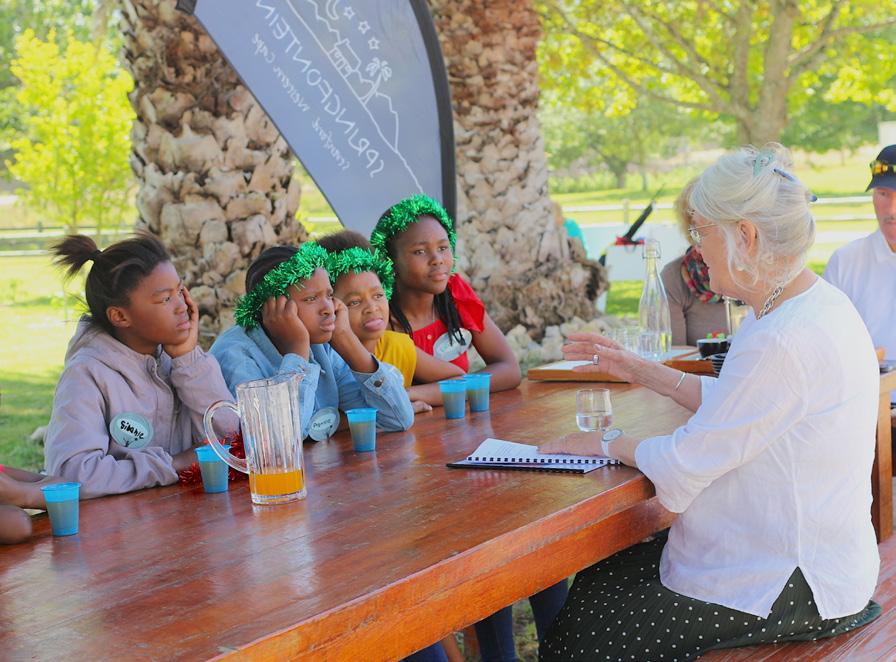
We can’t undo the R43 between Stanford and Hermanus even though there are things that should have been factored into the design, like avoiding a sensitive wetland as well as including a bicycle track that was part of the original idea.
That’s history. The new road, however, is a reality. It has made getting to Hermanus much easier and the circle is starting to take on a green story of its own.

The issue we have to concern ourselves with now is to make the road safer for pedestrians, drivers and the creatures that traverse it.
At the time of a writing this piece, a serious accident has just taken place on the R43, a mere 7kms from Stanford, which appears to be speed related. It’s not the first, there have been many - some fatal in the R43’s short existence.
With accidents happening on a regular basis and a busy festive season on the horizon, it’s not surprising that residents of Stanford are voicing their concerns and asking that something be done.

“People are driving like maniacs, passing where they shouldn’t,” says Stanford group contributor, Charleen. “I drive the same stretch of road every day to work in Hermanus, at the same time every morning. I’m basically being forced to pull over into the yellow line, even though I drive according to the speed limit.”
Another resident writes: “the turn-off to the vet and kennels is so dangerous. I expected them to make an extra lane for vehicles turning right coming from Stanford. I noticed the other day that quite a few people had a narrow escape when vehicles approach them at high speed from both directions.”
Adds Chris: “without law enforcement on a consistent basis nothing will change.”
Another group contributor, Colin, has asked that the section between Stanhaven and the circle also be addressed – decreasing the current 80 speed limit to 60.
A spokesperson for the community policing group, KROW, says the

matter is being looked into and that a special meeting has been arranged in Cape Town to address the issue with the provincial authorities.

There seems to be a general agreement amongst residents that the speed limit needs to be changed from 80 to 60 from the Sir Robert Stanford estate gate, all the way to the end of Stanford south’s residential area. The outcome to that is that strict law enforcement and cameras are needed to ensure the rules are being adhered to.
The idiom “be careful what you wish for” seems appropriate for the Stanford/Gansbaai communities that have, over a long time, asked for the upgrade of the R43, not comprehending all the negative consequences of that wish. The community input in the public participation process supported the building of the road.
The R43 is a provincial road. The Western Cape Public Works and Roads Department has a strategic master plan and priorities based on road function and traffic volumes to upgrade the network, and the R43 reached the top of the list in 2018.
The standards for design are determined by the province, again per road class, and the design of the R43 is based on 100 km/h with 2.5 m sealed shoulders. The old alignment was substandard with respect to stopping and passing sight distance and lane widths.
With the exception of the realigned curve at Vogelgat, the road stayed on the existing horizontal alignment, including the sections over wetlands. The vertical alignment was made smoother. This resulted in higher fills through gullies and revised location of culverts to distribute water from the mountains. This affected some of the wetlands on the lagoon side of the road. This could have been done with more care to the environment.
There will always be observations of maniacal behaviour on the road. The driving of courier truck drivers is generally scary!
Charleen drives to Hermanus daily: the drivers that pass her are probably locals, as tourist traffic is low between 07h00 and 08h00 outside holiday season. So, we need to look to our own communities to educate and encourage proper road behaviour. Driving in the yellow line is permitted under certain conditions (Refer to Section 298A of the National Road Traffic Act Regulations).
The rebuilt road with shoulders is safer than before. A local opinion to the contrary does not trump years of international research in road safety. The greatest benefit of shoulders is the reduction of run-off-theroad accidents by providing a recovery area for drivers going outside the lane of travel. And the final cost of the road was about R 350 million.
The access to the veterinary clinic is problematic, but the trips to and from the clinic did not warrant a turning lane. Province sticks rigorously to such warrants, as they do not have funds to provide turning lanes for every access to their high order roads. Mitigation for the problem may be to extend the no-passing area from the roundabout to the bridge.
The 80 km/h speed limit from the bridge to the Stanford Hills Road junction, which has a turning lane, lacks credibility. The junction is relatively safe, as are similar junctions and crossings, some of which have 120 km/h speed limits on the through road. The intersection of the R326 and R316 near Van Brakel Stoor is an example of 120 km/h on a major road. A speed limit of 80 km/h from the roundabout to the bridge is justified by the accesses to the clinic and Syringa Kennels, and credible as drivers will see the accesses as justification for the lower speed limit. A speed limit of 60 km/h will be excessively restrictive and lack credibility and not be obeyed: it will give a false sense of safety for us local drivers.
Law enforcement is an important part of managing safety on the roads. The speed control on the R43 past Stanford suffers from the complicated relationship between local and provincial responsibility. This issue was raised at one of the so-called ‘First Thursday’ meetings with the Mayor on the 5th of May 2022. There has, however, been no positive feedback from the Director of Protection Services.
My best wishes go out to KROW for their upcoming meeting with the provincial roads department in Cape Town.
The truth is that despite all my blessings, I had grown to be a rather un-fun, cynical, worry-wart, a bit of a grouch really. Ugh, zero stars, not to be recommended. What I needed was something to reignite the fire in my belly to live a little again.
So, what was I to do? Well, I did what I felt any self-respecting, responsible adult in my shoes might do. I effectively quit my day job, hauled out my bucket list - which had pretty much turned into a bin-it list - and ticked off the very first item, a paragliding course for beginners. It had been right there, on the page, written in block letters...for years. And all it took was for me to run a quick internet search, find a school, and book the dates. And just like that I felt a surge of something unfamiliar - a childlike excitement that I hadn’t felt in years.
That was just the beginning. To take on all my adventures, I had to leave my perfectionistic, people-pleasing, fear of failure notions behind me – and throw caution to the wind, rather literally.

This incredible journey had me skydiving for my wedding anniversary, learning how to lay laminate flooring, and building bespoke picture frames. It included kick-starting a rare 97-year-old [running] motorcycle, playing glow-in-the-dark putt-putt, and even playing hairdresser for a day. I tried my hand at teaching an English class at a rather posh private school, successfully escaped from an escape
room, read a novel from cover-to-cover in one sitting, attended barista training, learned how to professionally ice biscuits, and even learned how to crochet a coaster!
My journey had me meet some incredible people, test drive a fully electric sports car, spend a day glazing ceramics and then ended with a trip to 18m below sea level when my wife and l signed up for an Open Water Scuba Diving course. All this, and more, in only 30 days.
Now to the why I did all these crazy things…
I didn’t want to become a grumpy old grouch in the corner one day that no-one wants to talk to or spend time with. I much preferred the idea of being the toppie whose got the grandkids huddled around, hanging on to every word as I tell them the stories of my many adventures. How I visited Berlin to see the snow in winter, and then journeyed to a little island off the coast of Thailand to complete a Dive Masters certification. Both of which, might I add, are real-life plans - the latter already booked and paid for, coming next month.
I’m humbled by the experience. Even more so for the support of my loved ones who (not even once) alluded to the fact that I might be experiencing something resembling a pre-mature mid-life crisis.

The biggest lesson of all? It taught me more about myself and the world around me in 30 days than in the last decade. It gave me a newfound perspective on life and quite honestly shone a big bright light on the fact that life is no dress rehearsal. There are no do-overs.

This is the real deal, and we quite simply have to become an active participant, or risk being thrown about by the decisions and actions of others.
As with many great adventures in life, one learns a few valuable lessons along the way. I’d like to leave you with two of those epiphanies, in closing, to perhaps ponder on a little longer:
1. Take a moment to stop and ask yourself: Where am I going? Does that align with where I want to be, and perhaps more importantly, with WHO I want to be? Try not to force what doesn’t fit. Make plans, set the course, follow the roadmap, and if you find yourself on a slight detour – identify the opportunities, enjoy the adventure, and allow it to teach you something. I call these ‘detours’ my character-building cul-de-sacs.
2. It takes a complete mind shift to fully overhaul the way we look at, and experience, challenges in life. If I look back on some of the storms I’ve been through – especially those I desperately prayed would end – I begin to see a golden thread connecting them all. Those storms were less punishment and more privilege. A training ground for character building… which is [not so] strangely enough exactly what I had asked for.
A final quote by Marisa Donnelly: “Please don’t settle. Not in a job you hate, not in a town where you don’t feel at home, not with friendships that aren’t real, and especially, especially not with love.”
 Writer: Anneline Ferreira
Writer: Anneline Ferreira
In celebration of the six-month anniversary of the Stanford Spectator, we take a closer look at the Cape Sugar Bird whose illustration is used in the publication’s brand identity.

One of the eight bird species endemic to the fynbos biome of the Western and Eastern Cape, these nectar feeders are often mistaken for large sunbirds, but they are more closely related to starlings and possibly to the Australian honeyeater.
Sugar Birds, of the small genus Promerops, and of the Promeropidae family, are restricted to Southern Africa where stable populations exist in their preferred habitat. They are passerine or perching birds who have adapted to the strong winds in the Cape with the development of sharp claws. Dependent on proteas for nectar, the species has a long, curved bill and a brush-tipped tongue which serve as specialist tools for foraging, making them significant pollinators.
Their dependence on proteas means they are winter breeders when the flowers are abundant, and their diet is supplemented by insects also attracted to the complex inflorescences of the Protea family.
Despite its less colourful appearance, the Sugar Bird is highly photogenic due to its massively elongated tail feathers. It also sports a white chin, strong moustache-like stripes and a yellow undertail. Once you look more closely at the finer details, it’s easy to see why the Sugar Bird is a popular choice in design, brand identity and with botanical artists.
It began a month ago with a call for help from Paul Loake, manager of Birkenhead Breweries. A barn owls’ nest had been disturbed during a renovation procedure on the farm, and two newly hatched barn owl chicks needed emergency care.
“I called Stanford Animal Welfare (SAWs), and they were very quick to respond. It was clear the owl mother wasn’t coming back, and something had to be done to save the chicks,” said Paul.
The emergency call was picked up by two SAWs volunteers who were able to alert an owl rescue specialist living in the Overstrand, that two owlet orphans were on their way to them.
“I had kept them warm and quiet and just hoped it wasn’t too late to save them,” recalls Paul.

The volunteers picked up the duo, and as night fell, they set off on their journey to find assistance. Sadly, the smaller of the two owlets didn’t survive even with round-the-clock care. However, the remaining one clung onto life and within a day was able to eat the raw food it needed from his new human owl “mother” (all times wearing an owl mask to make the rehabilitation process less stressful and more natural).
A number of short video clips shows the progress of the owlet going from a bundle of fluff to a gangly, hungry, and featherless toddler.
The good news is that the owlet has blossomed into a handsome specimen with the barn owl’s white face feathers and tawny body feathers with a pair of glistening and alert dark eyes.

His next adventure will involve “shacking up” with two more barn owls, also waiting for the right time to be returned to the wild.
Dedication to wildlife often comes in small doses, but when a new life is given the freedom it deserves, the environment is just that little bit richer!
Every year between October and January, hundreds of small fluffy African penguin chicks are abandoned by their parents when they start their annual moult. During this time, the parents replace their old, worn-out feathers with a brand-new set of waterproof feathers and are unable to hunt for fish and feed their young during the three-to-four-week moulting process.
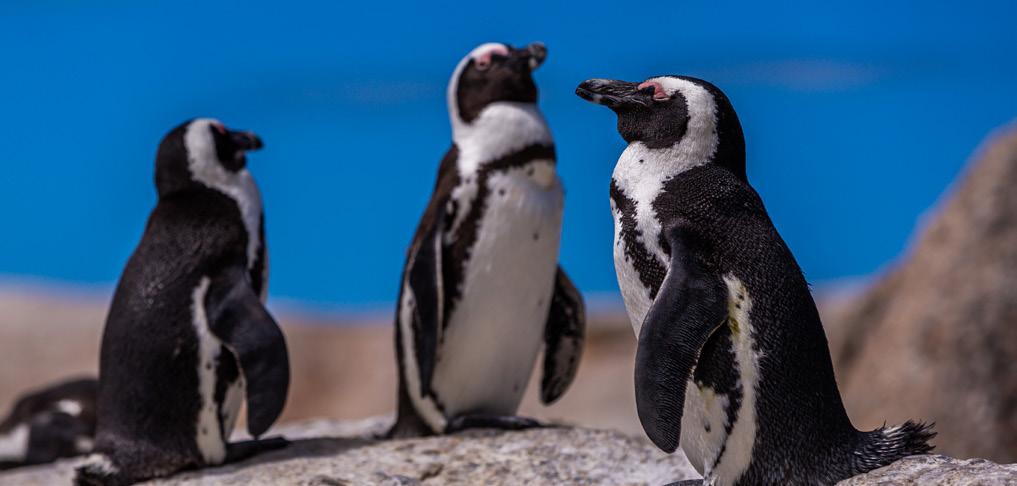
Penguin chicks are removed at the end of the breeding season, when the adults go through their annual moult. Some penguin parents start their moult before their offspring has reached the fledgling stage. Sadly, these chicks will either starve to death on the island or make their into the ocean without adequate fat reserves to help them to survive. Since the first chicks were removed from Dyer Island at the beginning of November, African Penguin and Seabird Sanctuary staff have been working non-stop for the past month to give them a fighting chance.
Consider
It’s that time of the year when Blue Cranes are nesting in the Overberg. We can all help by being aware, taking care not to disturb them and giving them the space to parent their chicks.
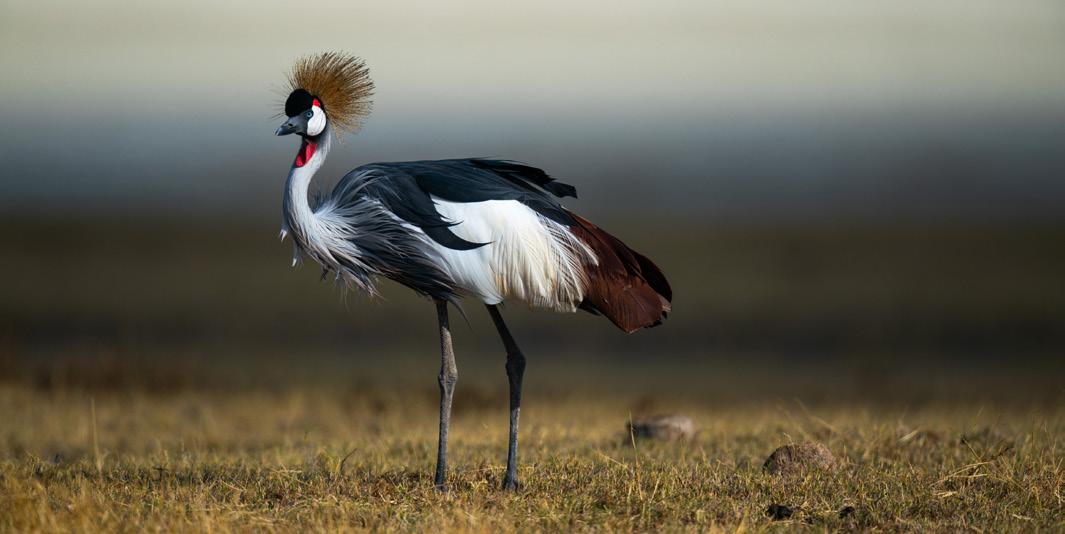
AFRICAN PENGUIN NUMBERS ARE DECLINING IN THE WILD DUE TO A VARIETY OF THREATS, INCLUDING OIL SPILLS AND OVERFISHING.supporting the African Penguin and Seabird Sanctuary by visiting their centre, buying Christmas gifts at their gift shop, or make a donation to help feed and nurture the chicks.




Ingredients:
500g fruitcake mix (3 ½ cups)
200g brown sugar (1 cup)
125g chopped dates (½cup)
125g butter
250ml apricot jam (1 cup)
5ml bicarbonate of soda
125ml brandy (½ cup)
75g cherries (½ cup)


150g pecan nuts (1 cup)
2 eggs (beaten)
240g cake flour (2 cups)
15ml cocoa
5ml baking powder
5ml mixed spice
3ml salt
Method:
• Place fruit, sugar, dates, butter and juice in a saucepan and boil for 20 minutes.
• Add bicarbonate of soda and allow mixture to stand and cool down.
• Mix brandy, cherries, and nuts into the cooked mixture.
• Stir in beaten the eggs.
• Stir dry ingredients and mix into fruit mixture.
• Turn mixture into a deep lined 20 cm round baking tin and bake at 160 ºC (325 ºF) for approximately 2 hours.
• Allow to cool in the tin before taking it out.
• Store the cake in the paper lining until required.
Tip:
If you double the mixture, it will need to be Sprinkle brandy over the cake once a week
Cover the cake with marzipan, leave to dry,


1. Which one of Santa’s reindeer has the same name as another holiday mascot?

2. Which country started the tradition of putting up a Christmas tree?
3. In the movie Elf, what was the first rule of The Code of Elves?
4. According to the song, what did my true love give to me on the eighth day of Christmas?
5. What was the highest-grossing Christmas movie of all time?

6. How many gifts in total were given in “The Twelve Days of Christmas” song?
7. In the classic Christmas movie, How the Grinch Stole Christmas, the Grinch was described with three words. What are they?

8. Which fairy tale was the first gingerbread houses inspired by?
9. How do you say “Merry Christmas” in Spanish?
10. What is the name of the last ghost that visits Scrooge in A Christmas Carol?
11. Visions of which food danced in children’s heads as they slept in the poem “’Twas The Night Before Christmas?”
12. Who wrote, “Christmas doesn’t come from a store, maybe Christmas perhaps means a little bit more?”
13. What was the first company that used Santa Claus in advertising?

14. In “The Christmas Song,” who did the narrator see kissing Santa Claus under the mistletoe?
15. What plant is sometimes known as the ‘Christmas flower’?
16. What is the first name of Scrooge in the novel A Christmas Carol?
17. Stollen is a traditional fruit cake in which country?
18. In which country is it tradition to eat KFC for Christmas dinner?
19. What is the name of Macaulay Culkin’s character in Home Alone?
20. What colour are the berries on mistletoe?
21. 26th December is also known as which saint’s day?
22. On the seventh day of Christmas, what does my true love give to me?
23. Which country gives Britain a Christmas tree each year as a thank you for support during World War II?
24. If you have your birthday on Christmas Day, what is your star sign?
25. Name 4 of Santa’s 8 original reindeer.
26. Stollen is the traditional fruit cake of which country?
27. Name the sweet bread loaf which is traditionally eaten during Christmastime in Italy?
28. Which milk-based drink is popular at Christmas?
29. What kind of pudding is referred to in the carol We Wish You a Merry Christmas?
30. What do they call mulled wine in Germany?
31. According to the Christmas song, what type of tree was the par tridge sitting in?
32. Who had a hit with Step into Christmas? 33. What collective had a hit in 1984 with Do They Know It’s Christmas? 34. Which modern day Canadian crooner is associated with Christmas? 35. What’s the next line in this Christmas song: Last Christmas, I gave you my heart… 36. Eartha Kitt had a hit with which Christmas song in 1953? 37. Stille Nacht is the German name for which traditional song, associ ated with Christmas? 38. Maria Carey’s Christmas hit has sold over 16 million copies. Can you name it?
In Away in A Manger, what are the cattle doing?
What colour Christmas did Elvis Presley sing about?
Working craft brewery and pub style restaurant and venue. A tour of the brewery can be arranged between 11h00 and 15h00, bookings essential. Beer tasting, scrumptious food and beautiful views. Home to Kleinriver Cheese and Wine Cellars where you can purchase wine, craft beer, ciders, cheeses, and gifts.
www.walkerbayestate.com | 028 341 0013
Modern B&B guest house suites and farm stay cottages, with elegant décor. Hiking, spa treatments, beautiful gift shop with art, lifestyle items, jewellery, cards and artwork. Weddings and events for up to 100 people. www.whitewaterfarm.co.za | 072 711 7608


botanical walks. The Haarkapper Hiking Trail to Tesselaarsdal begins at Phillispkop. You can become a member of Phillipskop, allowing you to visit any time during the year, at a cost of R200.00 per person. Spacious chalet-style self-catering cottages, with a beautiful natural swimming pool for guests. www.phillipskop.co.za | 073 621 1808
6. STANFORD/RAKA WINE 17KM
Award winning wines. Wine tasting and wine sales. No restaurant, but it has a small deli-style shop that sells local cheeses, olives, relish, biscuits, etc. Make your own selection to enjoy while tasting or try their Cheese and Wine pairing or their Ice-cream and Wine pairing. Open from Mondays to Saturdays, as well as on public holidays, closed on Sundays.
7. STANFORD/BOSCHRIVIER WINE ESTATE 19.5KM
3.
Working wine farm and developing vineyard. Self-catering accommodation in a country setting. Campbell’s Café provides breakfast and light lunches daily. Sunday lunch buffet. Also, home to the Blockshop, which stocks new and pre-loved Lego. The estate also offers a tennis court, pool, play area, deli, gift shop and bar. www.bluegum.co.za | 065 626 5456
Self-catering cottages and en-suite accommodation, with beautiful scenic landscapes. The Manor House Restaurant provides country cuisine with a contemporary twist, bookings essential. Their Poplar Spa has various individual treatments and packages available. They also offer retreats during the year. There is an art gallery, with a collection of mostly South African art. They also have a conference centre for up to 80 guests. www.stanfordvalley.co.za | 072 198 0862
246 hectares of pristine fynbos. Home to over 800 species of plants and over 100 species of birds, as well as mammals, reptiles and insects. Daily visitors welcome from 08h00 to 17h00. A conservation fee of R50 per adult and R20 per child; no dogs allowed. Various established hiking trails, with hidden ‘geocaches’ on two of the trails. Guided walks, rock art and heritage site, as well as specialist
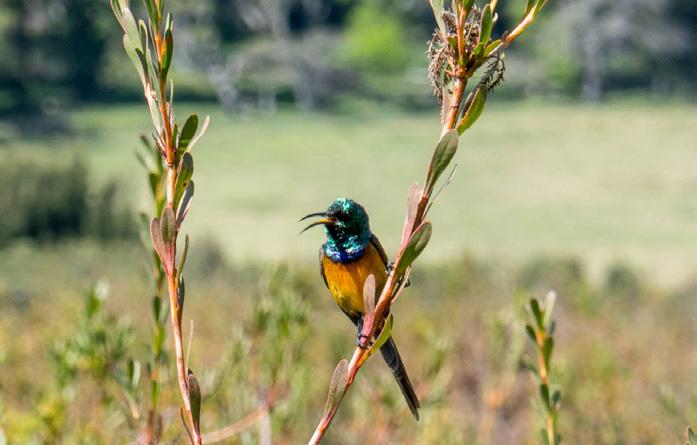
Wine tasting and wine sales. Five self-catering cottages. Weddings and events for up to 100 people. Light lunches with a limited menu. Various food items and crafts for sale in their small shop. Sales 076 736 0351 | Events 082 420 4267.


8. STANFORD/STONE HOUSE CHEESE ESTATE 20.9KM

Small dairy farm at the mouth of the Akkedisberg Pass. Visit their farmstall, where they sell delicious cheeses including Cumin Boerenkaas, Cajun semi-soft cheese and Garlic and Chives semi-soft cheese. They also make brie and camembert, either plain, or with subtle flavours added, such as black pepper or green fig. The farmstall is full of homemade goodies like rusks, biscuits, pickles, jams and olives. www.stonehousecheese.co.za | 072 948 2527
9. STANFORD/VAN BRAKEL STOOR PADSTAL (INTERSECTION R326 AND R316) 24.8KM
Farm stall with home-made products from the surrounding areas. They stock a wide range of items, from quince and green fig preserve to classic old school cookies and rusks. www. vanbrakelstoor.co.za | 028 212 2214
10. STANFORD/FAIR-FIG FARM 38.4KM
Seven varieties of figs growing on sixty hectares of land, namely Parisian, Ronde de Bordeaux, Tangier, Cosmic, Ambrosia, Dauphine and Purple Reign. They also have 12 hectares of Tango citrus. The fig season is from the end of November until the end of May. The figs can be purchased from their farm stall during these months.
www.stemsfruit.co.za | 078 376 1574

The end of a school year is a busy and exciting time for teachers, children and parents alike. Not only is it the end of serious things like tests and exams, but it’s also a time of fun and enjoyment as children dress up in colourful costumes and put on school plays for their loved ones. These photos are from two such schools here in
Stanford - Eduden Studio and the Little River Cottage School.
Eduden put on a nativity play on the 6th of December titled “The Donkey Inn” – a refreshing rendition with lots of twists and turns. The Little River Cottage School held their annual year-end festival on the 9th of

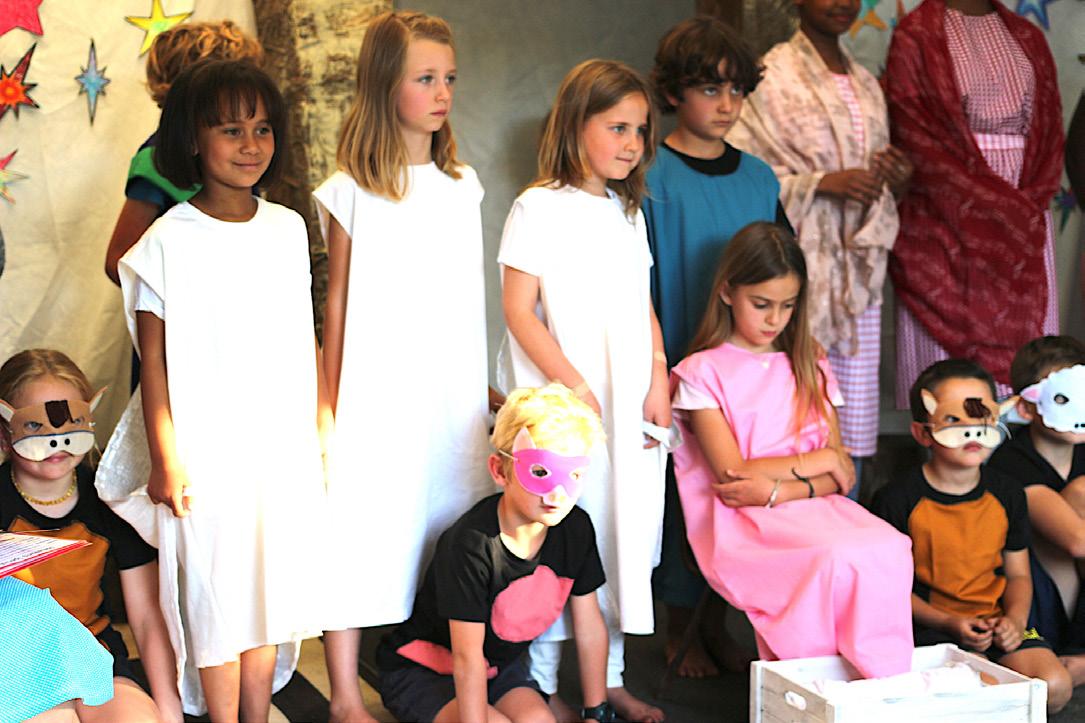
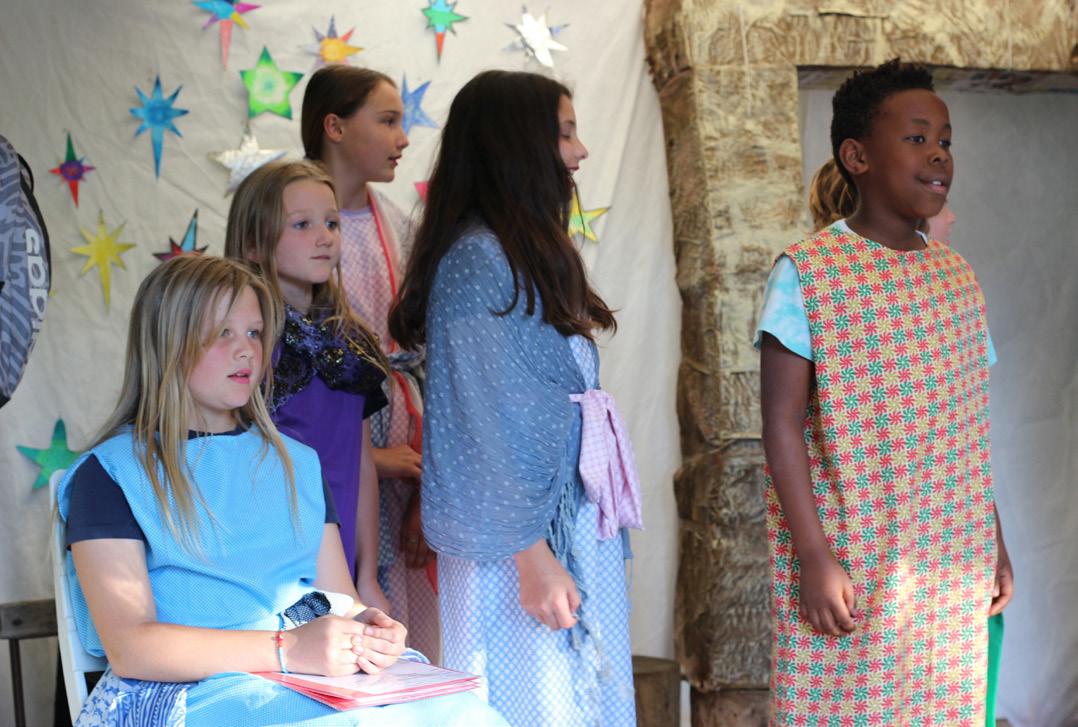

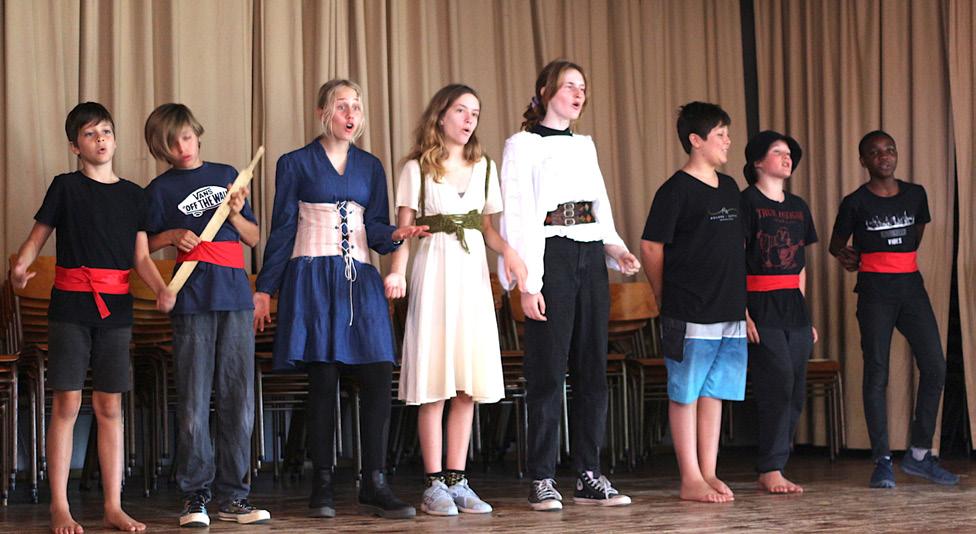


December. Children were invited to walk into and around a special advent spiral with a candle that was then lit by the ‘angel of life’ sitting in the centre of the circle. Each child then placed their candle somewhere within the spiral. This was followed by the handing out of gifts and participating in a delicious feast.
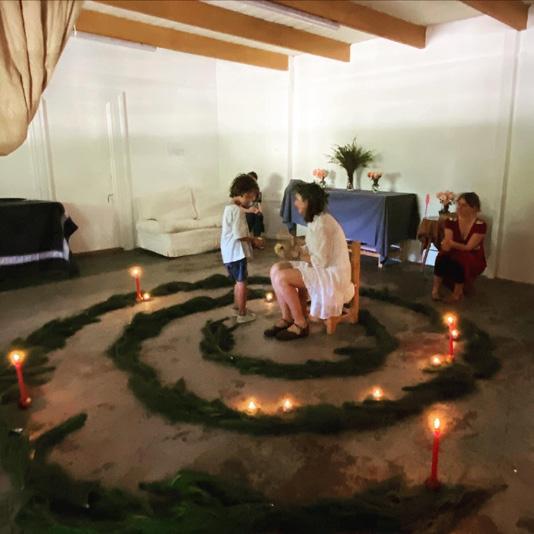 EDUDEN
EDUDEN
Gardens in Stanford are a continuing joy to be celebrated – and what better way to enjoy the fruits of the soil than with a festive end-of-the-year party,




involving all those who gather each month, through all seasons, in heat, freezing cold and pouring rain to sing the praises of those who contribute to our community’s garden culture.
This year, the chosen venue was Stan-
ford’s iconic The Zesty Lemon where gardens and fresh air are a heady mixture along with the vineyards, water lilies, koi fish – and of course wonderful fresh and appetizing food prepared and served by The Zesty Lemon team.

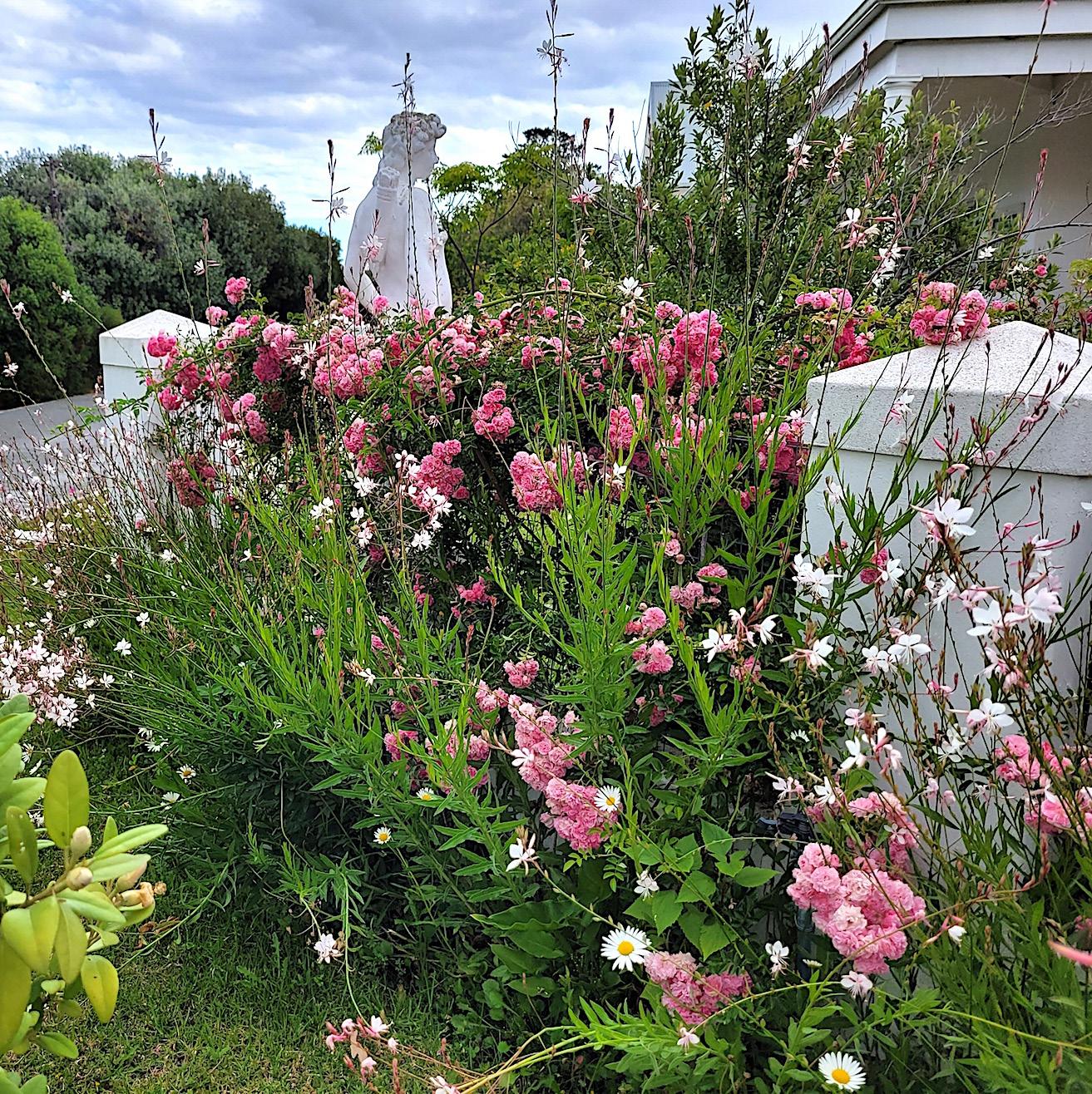


 Writer: Liz Clarke
Writer: Liz Clarke
Anyone who thinks you can’t grow roses in Stanford must think again. You just have to stroll down the street turn a few corners and peep over fences and between trees and you will find the most beautiful display of these romantic blooms, so many of them with the sort of captivating scent that has inspired everything from works of art to Shakespearian sonnets.

Stanford Conservation would like to wish all Stanford residents a blessed Christmas and an even more beautiful Stanford to reside in for years to come. Having a beautiful village, however, is not possible without the many volunteers who so willingly and passionately dedicate their time and expertise to the various sub-committees. This in turn leads to an enhanced and well maintained area, helping you grow your investment in this desirable rural heritage village.

























During Covid, the hands of the turret clock on the big limestone church in Queen Victoria Street ceased to function. The measured chimes were no longer heard. It brought an understated sense of loss.
That sense of loss was echoed recently with the passing of master clock repairer and retired fitter, Clive Gillman, whose bond with Stanford’s village clock began when he and his wife, Pearl, moved to Willowdale Farm in the Stanford area in 1978 and later moved to their home in Longmarket Street.
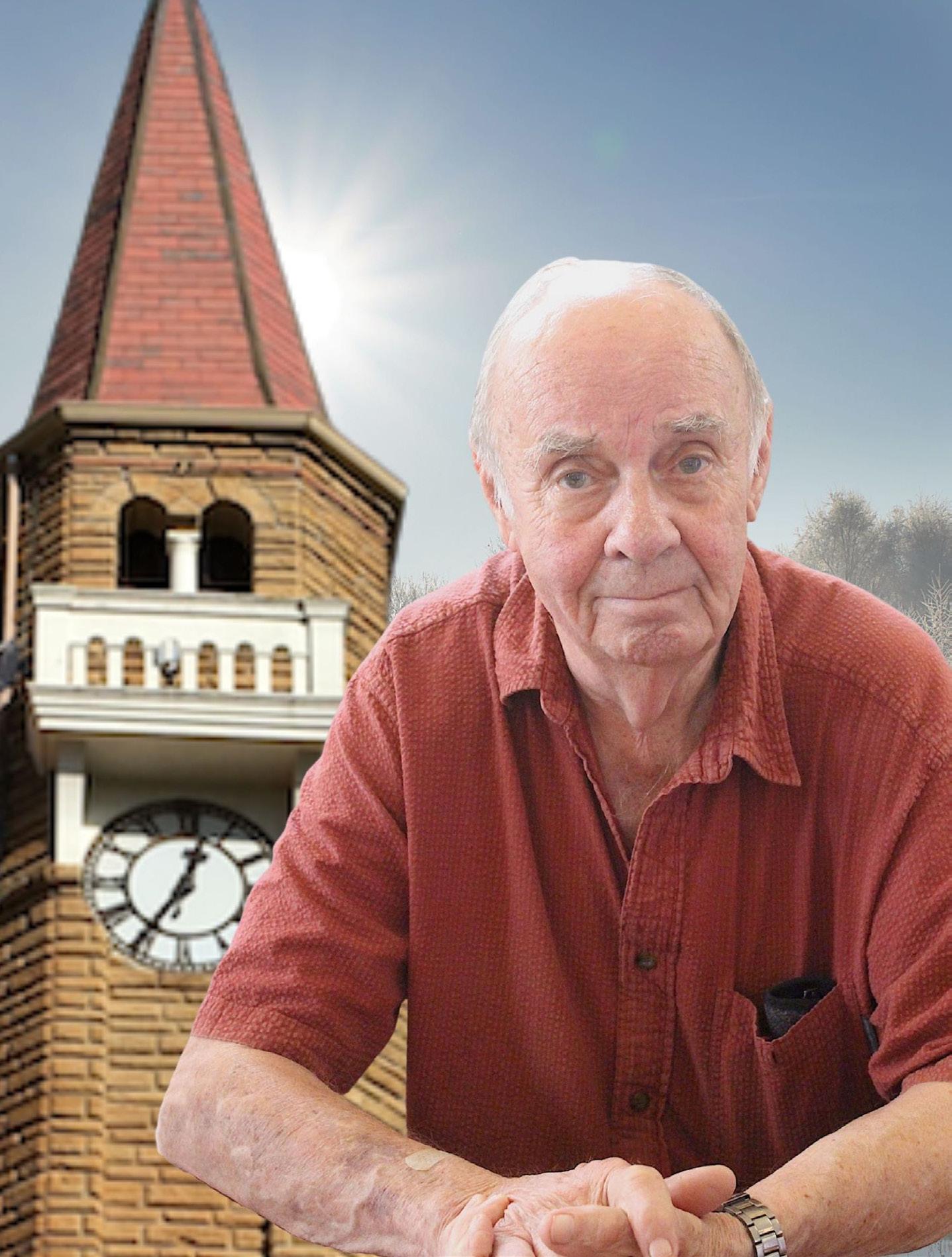
Not long ago, Clive was nurturing the century-old timepiece back into working order, chiming and gently nudging along the time of the day and night.
“I’ve always loved clocks,” he said. “When I was a child, I was able to open them up, take out the workings and put them back together again – they fascinated me. Later, I was intrigued by the concept of perpetual motion. A pendulum clock, which most turret clocks are, is almost like that, but of course once you have repaired the faulty mechanism, getting the timing right is an intricate and painstaking process.”
And that is precisely why Stanford’s village clock, weighing almost half a ton, landed up on Clive’s verandah in need of tender loving care and a pair of highly skilled hands.
“There were quite a few parts that needed attention” he said at the time. The clock itself might be big, but the balancing mechanisms and cogs are delicate components. It requires a huge amount of time and patience to get them to work correctly. Even when they do, it takes another few weeks of fine tuning to ensure that the timing is precise, accurate and steady.”
If the innards of a clock are beyond most of us, Clive had a very good analogy to explain the finer points of clock repair. “Think of the edge of a playing card – it’s miniscule. But if that timing process is out by that tiny width, it will mean seconds lost or gained and in a few hours your village clock will be wrong.”
Even so, putting the clock back in its turret, with all parts moving correctly, isn’t the end of the story.
The pendulum with its heavy weight has a mechanism that requires winding every few
days and that clock’s instruments need to be checked regularly, which means that Clive had to climb two ladders to reach his charge.
“As a turret clock repairer, I’ve climbed plenty of ladders,” he smiled. The Village will miss Clive, his quiet dignity and infinite knowledge of big clocks.
We are seeing TOO MANY dogs with grass seeds embedded in their skin... These grasses produce sharp, spiky seeds called awns, during summer and early winter. These awns burrow into the dog’s skin, between the toes, or get caught in the nose, eyes, ears, throat and can even enter the bloodstream.




If the awns are no longer visible, the pet needs sedation or general anaesthetic so that we can explore the wound and extract the whole awn. If left untreated these awns can migrate throughout the body causing infection and damage, even penetrating internal organs. Death is possible in extreme cases.









Dogs with long coats and thick undercoats are especially at risk, although any animal with fur can be at risk. The best prevention for grass seeds penetrating your dog’s skin is to thoroughly check their coat after they’ve been out. Untangle any grass awns and burn them so that they don’t propagate in your own garden.
If your dog continuously licks any part of their body all of a sudden, check for a seed that might already have penetrated the skin. The same goes for a dog that suddenly starts shaking their head or pawing at their nose or eyes. Look very carefully between the foot pads, in the groin area and under the arms. You might only notice a small wound, or your dog may be tilting their head or sneezing. Take your dog to your vet sooner rather than later.

Arecent email from a UK cousin prompted me to check-out our old school’s Facebook page. In the bottom corner of the latest newsletter, a grey box featured those who had entered permanent detention. Amongst ex-staff members listed I was saddened to see ‘S.T. O’Donnell (né Curtis) 1936-2022. My mind immediately returned to my almost forgotten school years.
Back in the day when Helen Shapiro and Billy Fury were seen as the apogee of British musical talent, I was wading my way through the alphabet soup that was the grammar school syllabus. Before break we heard about the antics of nineteenth century Prussian generals and their attempts to annex another portion of Ruritanian Europe. Then it was off to a geography lesson that covered the trials of growing cotton in Upper Volta. In the afternoon, a soporific double-maths period continued to confuse with its sines, cosines and tangents.

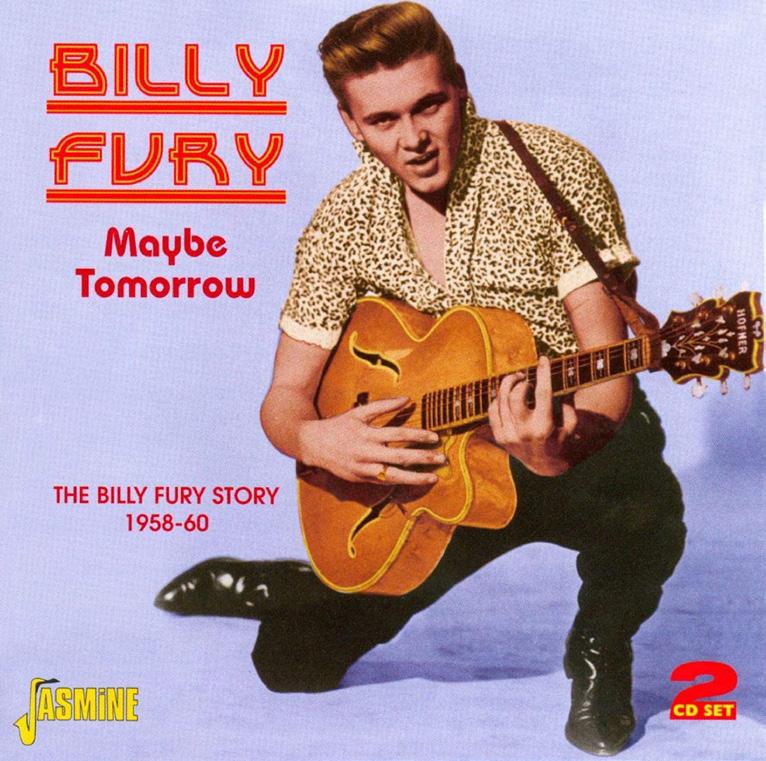
So, was this education – or just random gulps in the trough of knowledge?
And then along came Ms Curtis. She was twenty-something, smiley and gorgeous. She wore neither a pilled cardigan nor a threadbare sports jacket - and she smelt more like Chanel No 5 than Player’s No 6. Ms Curtis taught a new subject: Civics. She told us how the government worked and why it was important to listen to and understand what politicians had to say. She urged us to be sceptical and challenging. Her explanations of the influence of art and culture on society were, for me, profound. But most importantly she asked for our opinions – and listened to them.
Now this was real, this was education!
Suddenly my literary collection of Alistair MacLean’s stories of war-time escapades seemed trivial. Ms Curtis gave us a reading list that presented fresh and fascinating horizons and ideas.

Curvy Curtis (teenage boys can be cruel), cast her spell over the whole class. What a revelation it was when we discovered that, unlike our other teachers, she had a first name! She was Susan – but she called herself Su. In 1960 that missing ‘e’ was supercool.
It is said that teaching has rewards beyond the salary cheque, and I’m sure that’s true. In my case Su Curtis would no doubt have been surprised to hear of her influence over my formative years. She could not have guessed how she helped me take those letters from the soup – and like playing Scrabble – put them on the board in the right order.
Su will never know, but I hope she would have been pleased with her legacy.
